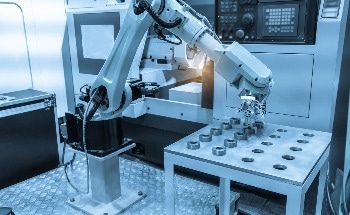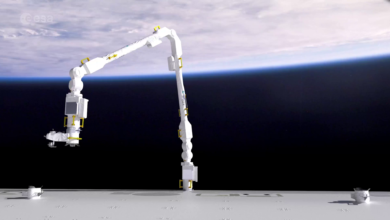New Scale Technologies, Inc. is Manufacturing Next-Generation “Viper” Fiber Positioners for the Via Project, a Collaboration with the Center for Astrophysics

New Scale Technologies, a leading manufacturer of the smallest micro positioning systems, is manufacturing prototype Viper fiber positioners for the Via Project. Via is a collaboration between Carnegie Observatories, the Center for Astrophysics | Harvard & Smithsonian, and Stanford University. Via will conduct an all-sky survey of stars using the 6.5-meter MMT (Arizona) and Magellan (Chile) telescopes.
Compared to previous fiber positioners, Viper systems are next-generation robots that provide improved accuracy, simplified integration, faster star-to-fiber alignment, and accelerated data collection. See below for background on New Scale’s Cobra Fiber Positioner used on the Subaru Prime Focus Spectrograph (PFS) delivered in 2017.
Improved Accuracy: Viper robots provide two-axis (Theta-Phi) rotation of each fiber. Embedded absolute angle sensors, on each axis, enable closed-loop positioning for the Viper patrol radius. Direct-drive piezoelectric SQUIGGLE® motors provide high torque with no gears, zero backlash and zero-power hold.
Simplified Integration: The drive and control electronics are mated to each Viper positioner and co-located inside the patrol radius. Each Viper system is factory-calibrated, and the values stored locally. 600 Viper robots are operated from a common EtherCat digital bus and DC power. Via system assembly, integration and testing are accelerated.
Accelerated Data Collection: Local closed-loop positioning speeds fiber-to-star alignment with reduced need for a global fiducial camera. Less time is used for alignment and more time is available for light collection and analysis.
“This new Viper positioner reflects the best capabilities of our mechatronic technologies and team”, stated David Henderson, Founder and CEO at New Scale. “We are combining our newest generation of motors, sensors, electronics and software to achieve the most demanding science objectives of the Via Project”.
“The absolute positioning accuracy provided by the Viper robots will enable much simpler and faster survey operations, which is an exciting possibility for us” says Charlie Conroy, Via Project Co-PI and Professor of Astronomy at Harvard University.
Viper Fiber Positioner Specification Summary
Parameter Value
Configuration Type Stacked, Theta-Phi
Motors Piezoelectric, SQUIGGLE®
Absolute Angle Sensors 13 bits/0.044 deg/0.77 mrad
Robot Spacing (Center-to-Center) 23.5 mm
Theta and Phi Arm Lengths 7.64 mm
Fiber Patrol Radius 15.28 mm
Target fiber position error. 16.7 μm = 0.1 arcsecond
Scale at telescope focus ~167 μm per arcsecond
Focal Plane Integration 600 robots position 600 fibers
Robot Integration Embedded drive and control electronics with factory calibration. EtherCat digital networking and 12-volt DC power.
Source:



